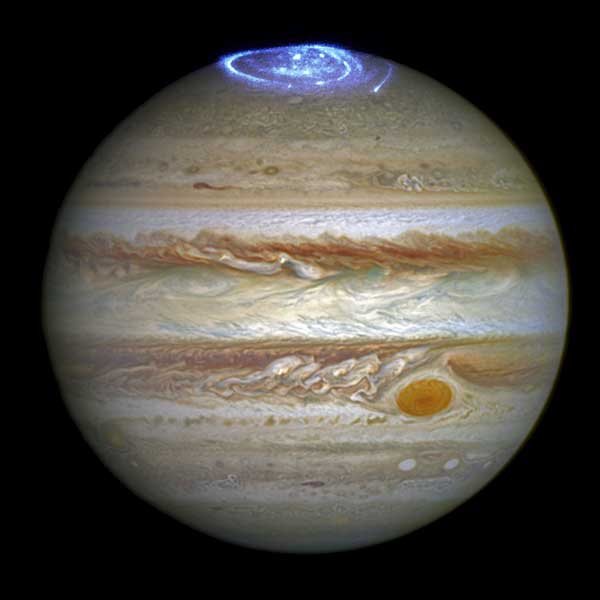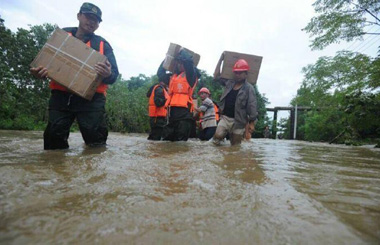NASA's Juno spacecraft loops into orbit around Jupiter
Updated: 2016-07-05 13:42
(Agencies)
|
||||||||
 |
|
Auroras created by high-energy particles are seen on a pole of the planet Jupiter in a NASA composite of two separate images taken by the Hubble Space Telescope. [Photo/Agencies] |
Jupiter's immense gravity also diverts many asteroids and comets from potentially catastrophic collisions with Earth and the rest of the inner solar system.
"We are learning about nature, how Jupiter formed and what that tells us about our history and where we came from," said Juno lead scientist Scott Bolton, with the Southwest Research Institute in San Antonio.
NASA expects Juno to be in position for its first close-up images of Jupiter on Aug. 27, the same day its science instruments are turned on for a test run.
Only one other spacecraft, Galileo, has ever circled Jupiter, which is itself orbited by 67 known moons. Bolton said Juno is likely to discover even more.
Seven other US space probes have sailed past the gas giant on brief reconnaissance missions before heading elsewhere in the solar system.
The risks to the spacecraft are not over. Juno will fly in highly elliptical orbits that will pass within 3,000 miles (4,800 km) of the tops of Jupiter's clouds and inside the planet's powerful radiation belts.
Juno's computers and sensitive science instruments are housed in a 400-pound (180-kg) titanium vault for protection. But during its 37 orbits around Jupiter, Juno will be exposed to the equivalent of 100 million dental X-rays, said Bill McAlpine, radiation control manager for the mission.
The spacecraft, built by Lockheed Martin, is expected to last for 20 months. On its final orbit, Juno will dive into Jupiter's atmosphere, where it will be crushed and vaporized.
Like Galileo, which circled Jupiter for eight years before crashing into the planet in 2003, Juno's demise is designed to prevent any hitchhiking microbes from Earth from inadvertently contaminating Jupiter's ocean-bearing moon Europa, a target of future study for extraterrestrial life.
- NASA's Juno spacecraft loops into orbit around Jupiter
- Independence Day parade held in Washington D.C.
- 'Star Wars stormtroopers' celebrate culture festival in Spain
- UKIP leader Farage announces surprise departure
- Explosion heard near US consulate general in Jeddah: media
- 43 killed in NW Pakistan flash flood

 Iceland soccer team gets hero's welcome back home
Iceland soccer team gets hero's welcome back home
 Power giant Hanergy shows its solar concept cars
Power giant Hanergy shows its solar concept cars
 Murray downs Kyrgios; Serena powers into quarters
Murray downs Kyrgios; Serena powers into quarters
 Nanjing's Linggu temple offers best view of fireflies
Nanjing's Linggu temple offers best view of fireflies
 In pics: Bikes in Beijing hutongs
In pics: Bikes in Beijing hutongs
 World in photos: June 27- July 3
World in photos: June 27- July 3
 Installation process of world's largest telescope in China
Installation process of world's largest telescope in China
 Dam's floodway blasted to discharge water in Hubei
Dam's floodway blasted to discharge water in Hubei
Most Viewed
Editor's Picks

|

|

|

|

|

|
Today's Top News
Abe's blame game reveals his policies failing to get results
Ending wildlife trafficking must be policy priority in Asia
Effects of supply-side reform take time to be seen
Chinese State Councilor Yang Jiechi to meet Kerry
Chinese stocks surge on back of MSCI rumors
Liang avoids jail in shooting death
China's finance minister addresses ratings downgrade
Duke alumni visit Chinese Embassy
US Weekly

|

|







